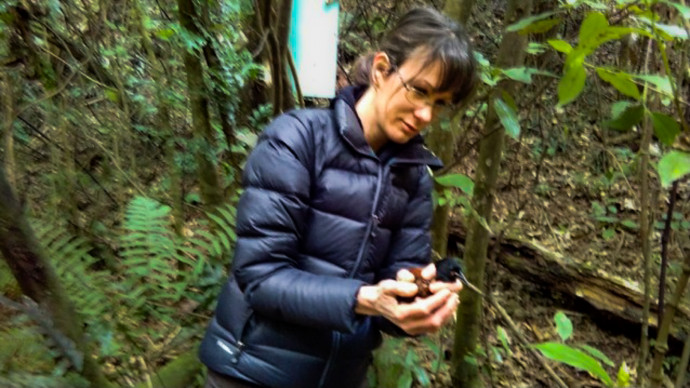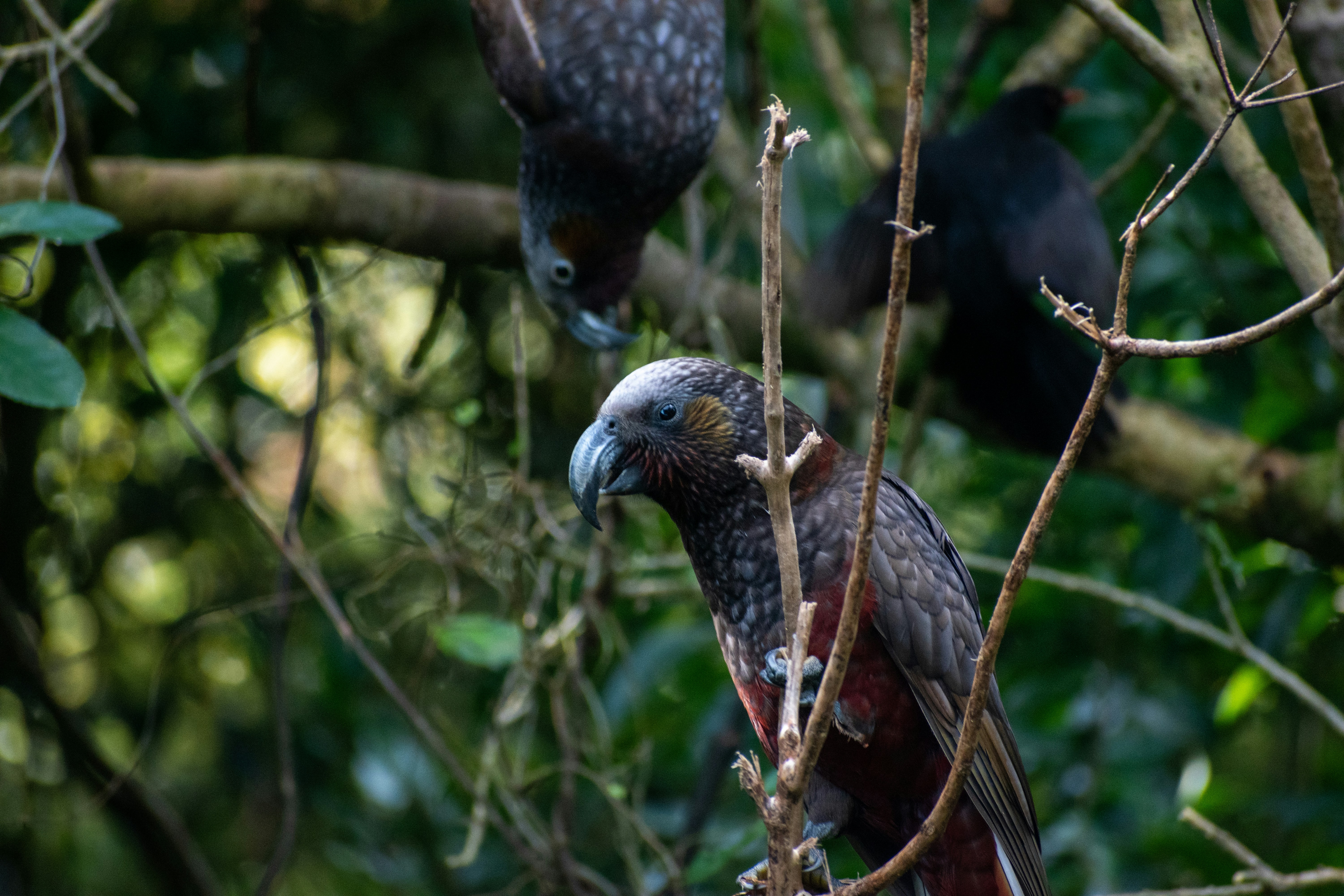News
Published 7 June 2024Q&A: Melissa Coton on the most valuable professional development of her career

In this Q&A, we speak with Melissa Coton, who was a participant in the Science Teaching Leadership Programme in 2016. She was placed with Zealandia Te Māra a Tāne in Wellington for Phase One of the Programme, helping to manage at-risk native species. Melissa taught at Muritai School when she participated in the programme. She is now a teacher at Boulcott School in Lower Hutt, where she teaches a class of year 4, 5 and 6 students.
Q: Where were you placed for Phase One of your programme and what did you work on?
A: During Phase One of the STLP programme, I had the privilege of being placed at Zealandia Te Māra a Tāne in Wellington. I worked with the team at Zealandia implementing science informed management plans for at risk species and gathering data for surveys and research projects. One of the research projects I was closely involved with was focused on the translocated population of tīeke (saddleback) at Zealandia. Concerns were raised about the genetic health of this population because of the small size of the flock. The aim of the study was to gather DNA from a representative sample of birds in order to develop a picture of the genetic diversity of the population. The analysis would then inform decisions relating to the management of the species and the potential for further bird translocations to increase genetic diversity. As the birds caught were also fitted with unique identifying bands and had various measurements taken, the data from the study will also be shared with other scientists to inform research that aims to answer questions relating to methods of identifying the gender of adult tīeke, dispersal patterns and mating behaviour. Another project I was involved in was the ongoing programme to monitor hihi (stitchbird) during the breeding season. My participation in this project involved making regular, scheduled observations of nesting boxes to monitor the breeding process throughout the season. This research aims to determine survival and nesting success compared with previous seasons and to evaluate the success of the intervention strategies in place.
Q: What was something eye-opening about being placed here?
A: Working at Zealandia gave me the opportunity to be closely involved in the daily enactment of science-informed management plans for at-risk species in the sanctuary. This included carefully monitored supplementary feeding of tuatara, takahē, kākā, hihi, kiwi, and other species, taking regular non-invasive measurements and monitoring the health of animals. Working so closely with some of Aotearoa's native taonga was a huge privilege and an eye-opening experience. Everyone working at Zealandia was extremely generous with giving their time to answer questions and explain what was happening. I also noted that everyone was open in admitting ‘I don’t know’ and I was repeatedly struck with how much is still unknown about New Zealand’s native species. I was initially surprised at the range and scope of ongoing data collection in the sanctuary. It seems that data is collected about absolutely everything and the reason for this was not always clear at the outset of my placement. However, as my placement progressed, I witnessed the importance of this ongoing data collection, for example how a documented increase in the number of birds accessing supplementary feeding sources indicate that the breeding season has begun and allows for closer monitoring systems to be put in place for targeted species at the correct time. Everyone working at the sanctuary is passionate about the goal of ecological restoration and this passion and dedication was infectious.

Tīeke at Zealandia. Sylvain Cleymans/ Upsplash
Q: What was the most beneficial experience of the programme?
A: It's really hard to identify a single 'most beneficial' experience of the programme; there were so many experiences that were beneficial to my professional development as a science teacher. Having the privilege of working at Zealandia gave me the opportunity to develop a deeper understanding of ecological restoration and conservation management in the New Zealand context. Working alongside scientists and having the opportunity to ask questions was an invaluable experience. The professional development delivered as part of the STLP was excellent. Participants not only have the opportunity to work alongside and learn from exceptional facilitators in order to become better science teachers themselves, they also have training focused on developing their ability to effectively lead change in their schools. We had opportunities to visit schools and see excellent science teaching in practice and to talk to past participants about their insights and guidance. Finally, the professional network of other passionate science teachers I developed as a result of participating in the STLP has been an ongoing source of inspiration and support.
Q: How has your understanding of science education evolved since participating in the programme?
A: The Science Teaching Leadership Programme supported me to deepen my understanding of the five science capabilities and how to plan and teach science with a focus on supporting students to develop these capabilities. The importance of explicitly planning and embedding the Nature of Science in science lessons was one of the key focuses of the professional development programme during Phase One. As a result, I have become more explicit with my learners about how classroom activities and content relate to the nature and process of science. Participation in the STLP made me a more confident, effective science teacher, and helped me develop the skills to become a more confident and effective science leader in our school.

Kākā at Zealandia. Eli Prater/ Upsplash
Q: What impact has the programme had on your school?
A: Participating in the STLP placed me in a strong position to lead science in the schools I have worked at since the programme. Using models and guidance provided by the programme, I have led professional development sessions focused on increasing teachers’ confidence to teach science by raising their science specific subject knowledge and developing sound science specific pedagogical practice. These sessions emphasised developing teachers’ understanding of the Nature of Science and the science capabilities and how these can be integrated into science planning and teaching. Guided by teacher feedback, professional development sessions included lots of practical activities that teachers could immediately implement in classrooms, as teachers reported that they valued the opportunity to try activities and investigations before teaching them. We developed plans for ensuring equal coverage of the four curriculum strands, the adoption of a school-wide planning template, a consistent approach to assessment that focuses on skills, attitudes and scientific understanding rather than task completion. As a result of the STLP:
- science was taught more frequently in my school
- we increased the coverage of science strands and contexts explored, and
- teachers reported an increased confidence and enjoyment of teaching science.
Q: Why would you recommend this programme to other teachers?
A: The Science Teaching Leadership Programme is easily the most valuable professional development experience of my teaching career. I would not hesitate to recommend it to any teacher or school that want to enhance their science programme and support teachers to develop their knowledge, skills and confidence to teach science. The programme offers a multifaceted approach to professional development, not only supporting participants to develop their own science content and pedagogical knowledge and confidence, but also focusing on supporting teachers to develop their leadership capacity and to develop strong professional networks with other passionate science teachers, schools and science institutions.
Q: Is there any advice you’d like to give to new teachers starting the programme?
A: Enjoy every minute and make the most of the experience!
Applications for Term 1 2025 are now open!
The Science Teaching Leadership Programme provides opportunities for primary schools, secondary science departments and their nominated teachers to enhance the teaching of science within school communities.
Learn more about what is involved in the Programme.
